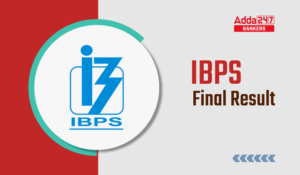Table of Contents
What is Provident Fund and Pension Fund? A provident fund is a type of retirement fund, It is a government-sponsored retirement scheme. In Provident Fund both Employer and Employee contribute to the Provident fund account. There are certain eligibility like minimum age, withdrawal amount, and maximum lock-in period, etc. are set by the government. .They are compulsory, often through taxes, and are funded by both employer and employee contributions. A pension plan is a retirement plan in which an employer, and often the employees, make contributions into a pool of funds set aside for the workers’ future benefit.
Pension funds one of the tyoe of Pension Plan.Pension funds are invested on the employees’ behalf, and the earnings on the investments help fund the workers’ lives upon retirement. The pension fund given by the Government of India to its employees is known as National Pension Scheme (NPS). An employee is required to contribute 10% of his/her basic pay plus dearness allowance towards the NPS and an equivalent amount is contributed by the government.The pension fund is generally managed by an employer, not the government. Get all the the details like types of Provident and Pension fund, Difference between the Provident and pension fund in this article
The pension fund is a type of pension plans let’s discuss other pensions plans:
National Pension Scheme Regulated by Pension Fund Regulatory and Development Authority (PFRDA), the National Pension Scheme or NPS is a popular option if you want to receive a regular pension after retirement. With NPS, During your working life, you can contribute to the pension account, Your funds are invested in a mix of debt and equity markets as per your choice. when you reach the age 60, you can withdraw one part of the investment as a lump sum amount and use the remaining for purchasing an annuity which will guarantee a regular income.
Annuity Plans:- There are two types of annuity plans- immediate and deferred. In immediate annuity plans, you pay a lump sum amount and instantly start receiving an annual or monthly annuity instantly. With deferred plans, you invest a lump sum amount or make regular payments for a fixed duration. The annuity payment can be either for a fixed period or a lifetime in both the plans.
Pension Plans with Life Cover:- These plans offer dual benefits of life insurance and investment. One part of your premium is saved for life insurance, and the other is invested in a fund of your choice. On maturity, you can withdraw the entire amount at once or receive regular payments. If you die during the policy term, your nominee will receive the death benefit.
Types of Provident Fund
Basically there are four types of Provident Fund which are given below:-
- Statutory Provident Fund
- Recognized Provident Fund
- Unrecognized Provident Fund
- Public Provident Fund
Statutory Provident Fund (SPF / GPF):- SPF is managed by Government, Semi Govt bodies, Railways, Universities, Local Authorities, etc. The contributions from the employee can be put in for tax deductions under section 80c. Interest amount credited during the financial year is not treated as income and hence it is free from income tax. The Saving amount at the time of retirement is exempted from tax.
Recognized Provident Fund (RPF):- Any organization which has employes more or less than 20 employees can join RPF. Most of the Persons (who are salaried) generally contribute to this type of Provident Fund. This is one of the accepted types of Employees Provident Funds (EPF). The organization can either join the Government scheme frame-up by the PF Commissioner (or) the employer himself can manage the scheme by creating a PF Trust. Employer’s contribution above 12% of salary is treated as the income of the employee and is taxable. collected funds redeemed by the employee at the time of retirement/resignation are free from tax if he/she continues the service for 5 years or more.
Unrecognized Provident Fund (UPF):- UPF is not recognized by Commissioner of Income Tax. Employer’s contribution is not considered as income in the year of investment and hence exempted in that specific year. So, it is tax-free in a particular year of contribution. At the time of redemption/retirement, the employer’s contributions and interest thereon are treated as ‘salary income’ and chargeable to tax.
Public Provident Fund (PPF):- any individual from the public, whether is in employment or not may contribute to this fund. The minimum contribution is Rs. 500 p.a. & maximum is Rs 1.5 Lakh Rs. p.a. The amount is repayable after 15 years. Experts say that PPF is an excellent retirement planning/savings tool, for those who do not come under any pension scheme. The PPF offers tax benefit under section 8OC and the interest earned is also free from tax. All the eligible withdrawals are free from taxes.
Differences between Provident Fund and Pension Fund
| Parameter | Pension Fund | Provident Fund |
| Eligibility | Both NRIs as well as Indian citizens can invest in it. | Only Indian citizens can avail its benefits. |
| Interest Rate | 10 to 12% depending upon the market | Fixed 8.60 % which can be revised by the RBI |
| Minimum Age | min 18 years required | No minimum age |
| Minimum Yearly Contribution | Min Rs. 6,000 | Min Rs. 500 |
| Taxation | It is tax-exempted | Tax-free |
Click Here to Register for Bank Exams 2020 Preparation Material
Visit Achieversadda.com and participate in discussions with other aspirants and achievers. Get answers to your queries and connect with others on Achieversadda.com
| SBI PO 2020 | IBPS PO 2020 | SBI Clerk 2020 | IBPS Clerk 2020 |
| RBI Grade B 2020 | RBI Assistant 2020 | LIC AAO & AE | SEBI Grade A 2020 |
Frequently Asked Questions
Q.How many types of Provident fund are there?
Ans:- There are four types of Provident Fund SPF, RPF, UPF and PPF.
Q. What is the provident Fund?
Ans:- A provident fund is a type of retirement fund, It is a government-sponsored retirement scheme.
Q. What is Pension Fund?
Ans:- A pension plan is a retirement plan in which an employer, and often the employees, make contributions into a pool of funds set aside for the workers’ future benefit.
Q.Which is the most commonly used Provident fund by people?
Ans:- Public Provident Fund (PPF) is the most commonly used provident fund by people.




 IBPS Final Result 2025 Coming Out Tomorr...
IBPS Final Result 2025 Coming Out Tomorr...
 Simple Tips to Avoid Common Mistakes In ...
Simple Tips to Avoid Common Mistakes In ...
 Important Topics & Shortcuts for IDB...
Important Topics & Shortcuts for IDB...




